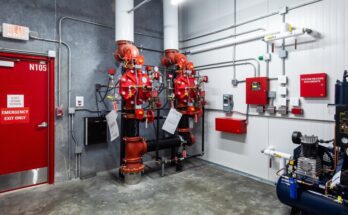The sampler was initially designed for a sandy space beach with an area of 165 feet. As we now know, nothing like that exists on Bennu. So instead, the team has now settled on Nightingale, a 52-foot-diameter site sitting inside a crater that’s thought to be well preserved. There are boulders the size of buildings surrounding the site, and many other large rocks that could disrupt the sample collection or totally wreck the TAGSAM arm. But it still affords the best opportunity for a safe collection of meaningful material.
A couple of new capabilities were also developed to try to keep the probe safe during the procedure. One was to nix an imprecise lidar-based navigation and guidance system in favor of natural feature tracking (NFT), in which an optical camera continuously takes images of the surface throughout the 4.5-hour TAGSAM procedure and processes them to update the estimate of the spacecraft’s trajectory. According to Billett, Lockheed Martin initially developed NFT for the US Army, and this is the first time it’s being used as part of a space mission. Since it takes more than 18 minutes for communications to go one way between Earth and OSIRIS-REx, autonomous control will be critical for adjusting maneuvers on the fly.
Here’s how the sample collection will work:
In preparation
The OSIRIS-REx team has spent weeks inputting all the proper command prompts to painstakingly maneuver the spacecraft so that by October 20, it will be in exactly the right spot to begin the sample collection process.
2,500 feet above the surface–4.5 hours from touchdown
The spacecraft begins a maneuver to depart orbit and transit toward Nightingale. Shortly after it leaves orbit, the TAGSAM arm is deployed, the spacecraft rotates into the proper orientation, and the navigation camera that enables the NFT system is redirected toward Bennu’s surface. From here, the NFT will be working to constantly determine OSIRIS-REx’s position and ensure its safety relative to a map of hazards on the surface.
410 feet–20 minutes from touchdown
The spacecraft’s solar arrays are folded into a “Y-wing” position. OSIRIS-REx fires its thrusters to perform a “checkpoint burn,” which ensures that the spacecraft is heading toward Nightingale.
177 feet–10 minutes from touchdown
Thrusters fire again for the “matchpoint burn” to match the spacecraft’s speed with the asteroid’s rotation. This sets up the precise contact and velocity for the touchdown, and the spacecraft is essentially in a free-fall descent to the surface.
16 feet
This is the final benchmark before the actual sample collection occurs. If the NFT thinks the TAGSAM arm is coming down on something dangerous flagged by the hazard map, it will automatically execute an abort burn that moves the spacecraft up and away from the surface. Billett says there’s about a 5.8% chance this might happen. Otherwise, it keeps heading down.
Touchdown
TAGSAM will make brief and very gentle contact with the surface for five to 10 seconds. During that time, the nitrogen gas bottle fires, and sample collection gets under way. Once it’s over, the thrusters will fire again and the spacecraft will head out to a safe distance from the asteroid.
The aftermath
The goal is for the TAGSAM head to pick up at least 60 grams of material (although it could potentially acquire as much as two kilograms). The team will run a series of experiments over the next week or so to verify if this has been achieved. It’ll start with visual evidence of the TAGSAM head from one of the onboard cameras. Then the team will measure the mass of the sample inside the TAGSAM head. You can’t really weigh things in the microgravity field of Bennu (a millionth the gravity at Earth’s surface), so this will focus on observing the spacecraft’s spin (which should change with added mass). If the team thinks a sufficient sample has been collected, it will be stowed in the sample return capsule.
But there’s actually a 30% chance OSIRIS-REx fails to pick up enough material. TAGSAM has two more nitrogen gas bottles for two more collection attempts. Because Nightingale will already have been disturbed by the first touchdown, a second attempt would most likely occur in January at a site called Osprey. That means we could potentially get samples from two different sites on Bennu–and it would be up to researchers on Earth to disentangle everything and figure out what originated from where.
That might seem like a hassle, but it would be a small price to pay to get some rubble from a rock 200 million miles away. Either way, OSIRIS-REx would be scheduled to leave Bennu later in 2021, and deliver the collected samples back home on September 24, 2023.


